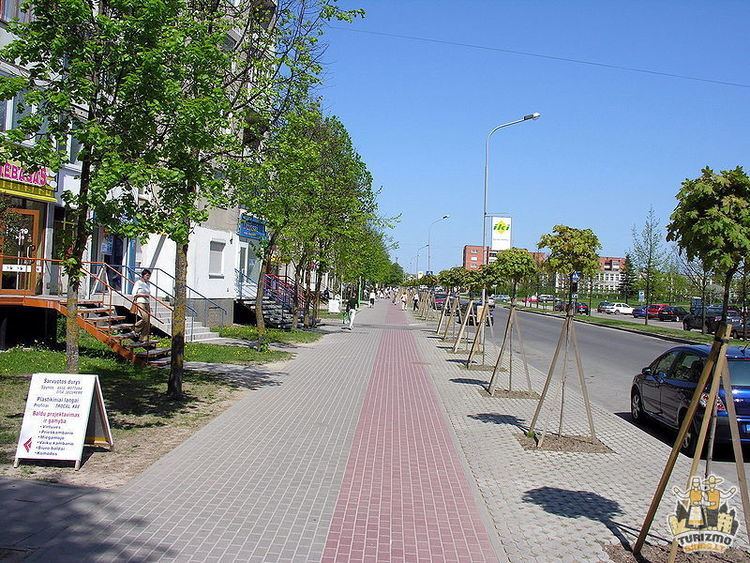Area 14 km² Team FK Mažeikiai | First mentioned Sixteenth century Local time Thursday 11:54 AM | |
 | ||
Eldership Mažeikiai town eldership Capital of Mažeikiai district municipalityMažeikiai town eldershipMažeikiai rural eldership Weather 7°C, Wind NW at 16 km/h, 64% Humidity Municipality Mažeikiai District Municipality | ||
Jubana in movie about ma eikiai city behind the scenes
Mažeikiai ( pronunciation , Samogitian: Mažeikē) is a city in the north-western Lithuania, on the Venta River. It had a population of around 45,300, making it the eighth largest city in Lithuania. The city is the administrative center of Mažeikiai district municipality in Telšiai County. It is the largest city that does not have its county.
Contents
- Jubana in movie about ma eikiai city behind the scenes
- Map of MaC5BEeikiai Lithuania
- History
- Economy
- Culture
- Sister cities
- References
Map of Ma%C5%BEeikiai, Lithuania
History
Mažeikiai was first mentioned in written sources in 1335. A chronicler of the Livonian Order wrote about a campaign of the Order, during which the land of Duke Mažeika was devastated. The town started growing rapidly in 1869 when the Libau–Romny Railway connecting Vilnius and Liepāja was constructed. In 1893, the town had 13 shops and 5 alehouses. In 1894 an Orthodox church was built and a synagogue had been founded several years earlier, in 1902 a Catholic church, and in 1906 an Evangelical-Lutheran church. From 1899 to 1918 the town was called Muravyov.
In 1919 Mažeikiai became the county centre and received the rights of self-government. A hospital and a library were opened in 1922 and a museum in 1928. In 1939 the population of the town was recorded as 5,618. In 1940 26 industrial companies, 4 banks and a credit union operated in Mažeikiai.
In 1940 the Soviet Union occupied the town and the following year the Germans occupied the town in August 1941 a mass-killing occurred in which 4,000 Jews from the Mažeikiai district were killed.
In 1950 Mažeikiai became the district centre.
Economy
In 1980 an oil refinery plant "Mažeikių Nafta" was opened. Today it is one of the largest industrial plants in Lithuania. Its privatisation to Williams, an American energy company, caused many scandals and major disturbances in the Lithuanian government. Williams International facing financial problems sold Mažeikių Nafta to Yukos. After Yukos' bankruptcy, the Lithuanian government and Polish company PKN Orlen signed a sale agreement of Mažeikių Nafta in 2006. Also Yukos International UK B.V. signed a sale agreement with PKN Orlen, selling its Mažeikių Nafta shares to the Polish company. The buyout was finalized on 15 December 2006, with USD 1,492,000,000 being paid by PKN Orlen to Yukos International, and USD 851,828,900.31 to the Lithuanian Government. In 2004, Mažeikių Nafta financed the construction of New church of Saint Francis of Assisi, which cost 650 000 LTL.
Culture
In 1928 Mažeikiai museum was founded by teacher Stasys Ličkūnas. According to the official website of the Mažeikiai district municipality, the museum preserves and exhibits archaeological, historical, ethnographic, and folk art collections of the Samogitia region.
Mažeikiai has one of the largest cultural centres in Lithuania. It was established in 1946 as a culture house. Since 2005 it moves to a new building which has three hals: the great hall contains 750 seats, the small hall contains 250 seats while entertainment hall contains up to 500 seats. The centre has 20 amateurs art collectives.
In 1922 a public library was founded in the city. In 1975 it moved to a new three-story building. In 1976 it became a central library in the district with 21 rural and 2 urban branches.
